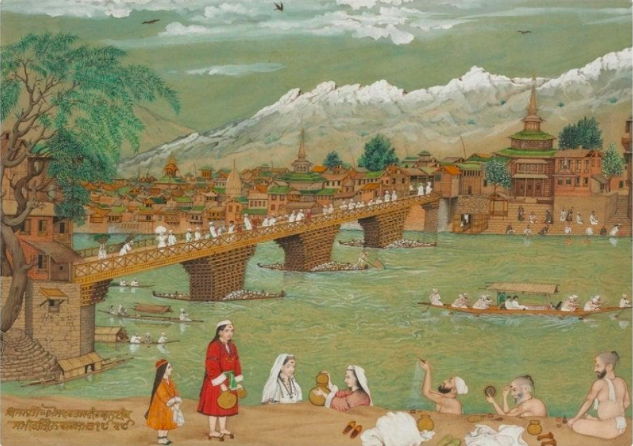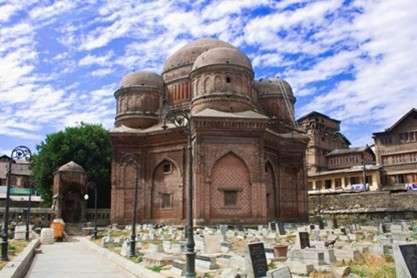Pashmina Introduced in Kashmir Valley in 14th century

Old Painting of Shah Hamadan Mosque, Srinagar
Kashmir, the centre of Shaivite and Buddhist theology and practice, shares common meditative and mystical aspects with Sufi Islam. Since 12th century, free discourse and debate gave rise to a unique composite and syncretic Kashmiri culture. Amongst many Sufis, a Persian Sufi scholar, Mir Sayyid Ali Hamadani (1314-1384) is said to have brought 700 Persian craftsmen and 113 crafts to Kashmir. In Ladakh, he found poor Buddhist tribal herdsmen raising Pashmina goat and tried to help them by presenting socks made from its fine fleece to the Sultan ruling in the valley. On his request, the Sultan helped the promotion of pashmina shawl manufacture. Many monuments celebrate the life and contribution of Shah Hamadan in Kashmir.

Tomb of Sheikh Noor-ud-din Wali, Charar-e-Sharif, Budgam
Kani weaving Introduced in Kashmir Valley in the 15th Century

Old painting of Zaina Kadal Bridge, Srinagar
In 1340, the Swats of the Mir dynasty, established their rule in Kashmir. The enlightened rule by the eighth Swati Sultan Zain-ul-Abidin (1420-1470) saw his active promotion of the arts and crafts. He is reputed to have brought several craftsmen, including carpet weavers, from Turkistan to exchange ideas and upgrade the skills of Kashmiri craftsmen. They taught the Kashmiri shawl weavers the technique of inserting designs in the plain warp, laying the foundation of the patterned kani hand-woven shawl industry. He is remembered fondly as the Akbar (the great) of Kashmir. The legendary Zaina Kadal Bridge across the Jhelum and his Mother’s tomb are reminders of this great ruler.

Mausoleum of Zain-ul-Abidin's Mother, Srinagar
